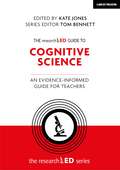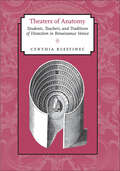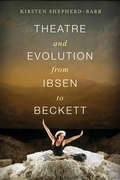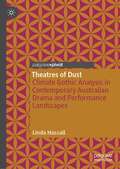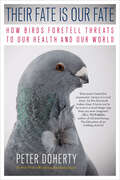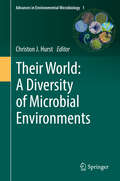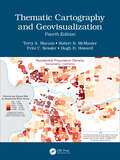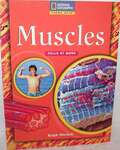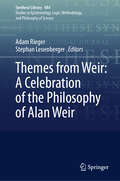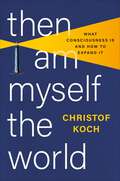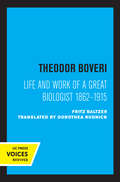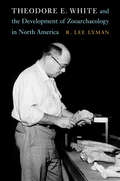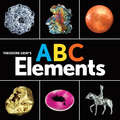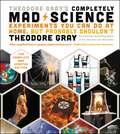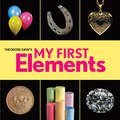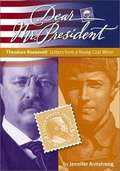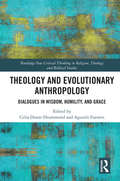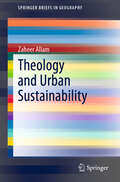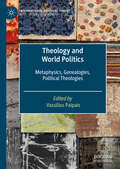- Table View
- List View
The realistic empiricism of Mach, James, and Russell
by Erik C. BanksIn the early twentieth century, Ernst Mach, William James, and Bertrand Russell founded a philosophical and scientific movement known as 'neutral monism', based on the view that minds and physical objects are constructed out of elements or events which are neither mental nor physical, but neutral between the two. This movement offers a unified scientific outlook which includes sensations in human experience and events in the world of physics under one roof. In this book Erik C. Banks discusses this important movement as a whole for the first time. He explores the ways in which the three philosophers can be connected, and applies their ideas to contemporary problems in the philosophy of mind and the philosophy of science - in particular the relation of sensations to brain processes, and the problem of constructing extended bodies in space and time from particular events and causal relations.
The researchED Guide to Cognitive Science: An evidence-informed guide for teachers
by Kate JonesresearchED is an educator-led organisation with the goal of bridging the gap between research and practice. This accessible and punchy series, overseen by founder Tom Bennett, tackles the most important topics in education, with a range of experienced contributors exploring the latest evidence and research and how it can apply in a variety of classroom settings. In this edition, Kate Jones considers various principles from cognitive science that can be used to enhance teaching and learning, including cognitive load theory, dual coding theory, interleaving, retrieval practice and spaced practice. Kate has sourced contributions from teachers and researchers including Jade Pearce, Sarah Cottingham, Adam Boxer, Jonathan Firth, Paul A. Kirschner, Pedro De Bruyckere and Lekha Sharma. Kate Jones is a teacher and an experienced leader. She is the author of seven books and is senior associate for teaching and learning at Evidence Based Education.
The researchED Guide to Cognitive Science: An evidence-informed guide for teachers
by Kate JonesresearchED is an educator-led organisation with the goal of bridging the gap between research and practice. This accessible and punchy series, overseen by founder Tom Bennett, tackles the most important topics in education, with a range of experienced contributors exploring the latest evidence and research and how it can apply in a variety of classroom settings. In this edition, Kate Jones considers various principles from cognitive science that can be used to enhance teaching and learning, including cognitive load theory, dual coding theory, interleaving, retrieval practice and spaced practice. Kate has sourced contributions from teachers and researchers including Jade Pearce, Sarah Cottingham, Adam Boxer, Jonathan Firth, Paul A. Kirschner, Pedro De Bruyckere and Lekha Sharma. Kate Jones is a teacher and an experienced leader. She is the author of seven books and is senior associate for teaching and learning at Evidence Based Education.
Theaters of Anatomy: Students, Teachers, and Traditions of Dissection in Renaissance Venice
by Cynthia KlestinecOf enduring historical and contemporary interest, the anatomy theater is where students of the human body learn to isolate structures in decaying remains, scrutinize their parts, and assess their importance. Taking a new look at the history of anatomy, Cynthia Klestinec places public dissections alongside private ones to show how the anatomical theater was both a space of philosophical learning, which contributed to a deeper scientific analysis of the body, and a place where students learned to behave, not with ghoulish curiosity, but rather in a civil manner toward their teachers, their peers, and the corpse. Klestinec argues that the drama of public dissection in the Renaissance (which on occasion included musical accompaniment) served as a ploy to attract students to anatomical study by way of anatomy’s philosophical dimensions rather than its empirical offerings. While these venues have been the focus of much scholarship, the private traditions of anatomy comprise a neglected and crucial element of anatomical inquiry. Klestinec shows that in public anatomies, amid an increasingly diverse audience—including students and professors, fishmongers and shoemakers—anatomists emphasized the conceptual framework of natural philosophy, whereas private lessons afforded novel visual experiences where students learned about dissection, observed anatomical particulars, considered surgical interventions, and eventually speculated on the mechanical properties of physiological functions. Theaters of Anatomy focuses on the post-Vesalian era, the often-overlooked period in the history of anatomy after the famed Andreas Vesalius left the University of Padua. Drawing on the letters and testimony of Padua's medical students, Klestinec charts a new history of anatomy in the Renaissance, one that characterizes the role of the anatomy theater and reconsiders the pedagogical debates and educational structure behind human dissection.
Theatre and Evolution from Ibsen to Beckett
by Kirsten Shepherd-BarrReveals the deep, transformative entanglement among science, art, and culture in modern times
Theatre and Evolution from Ibsen to Beckett
by Kirsten Shepherd-BarrEvolutionary theory made its stage debut as early as the 1840s, reflecting a scientific advancement that was fast changing the world. Tracing this development in dozens of mainstream European and American plays, as well as in circus, vaudeville, pantomime, and "missing link" performances, Theatre and Evolution from Ibsen to Beckett reveals the deep, transformative entanglement among science, art, and culture in modern times.The stage proved to be no mere handmaiden to evolutionary science, though, often resisting and altering the ideas at its core. Many dramatists cast suspicion on the arguments of evolutionary theory and rejected its claims, even as they entertained its thrilling possibilities. Engaging directly with the relation of science and culture, this book considers the influence of not only Darwin but also Lamarck, Chambers, Spencer, Wallace, Haeckel, de Vries, and other evolutionists on 150 years of theater. It shares significant new insights into the work of Ibsen, Shaw, Wilder, and Beckett, and writes female playwrights, such as Susan Glaspell and Elizabeth Baker, into the theatrical record, unpacking their dramatic explorations of biological determinism, gender essentialism, the maternal instinct, and the "cult of motherhood."It is likely that more people encountered evolution at the theater than through any other art form in the late nineteenth and early twentieth centuries. Considering the liveliness and immediacy of the theater and its reliance on a diverse community of spectators and the power that entails, this book is a key text for grasping the extent of the public's adaptation to the new theory and the legacy of its representation on the perceived legitimacy (or illegitimacy) of scientific work.
Theatres of Dust: Climate Gothic Analysis in Contemporary Australian Drama and Performance Landscapes
by Linda HassallThrough a contemporary Gothic lens, the book explores theatre theories, processes and practices that explore; the impacts of continuing drought and natural disaster, the conflicts concerning resource extraction and mining and current political debates focussed on climate change denial. While these issues can be argued from various political and economic platforms, theatrical investigations as discussed here suggest that scholars and theatre makers are becoming empowered to dramaturgically explore the ecological challenges we face now and may face in the future. In doing so the book proposes that theatre can engage in not only climate change analysis and discussion but can develop climate literacies in a broader socio-cultural context.
Their Arrows Will Darken the Sun: The Evolution and Science of Ballistics
by Mark DennyThe science of ballistics has a long history and starts with one question: How does a projectile move through the air? Even before physicists worked that one out, military engineers had been tinkering with ballistic devices for centuries. The trebuchet of the Middle Ages has given way to rocket power, and the science of ballistics has evolved to match the technology. Mark Denny’s survey covers this dynamic subject from prehistory to the weapons of tomorrow.Taking the bang-whiz-thud approach, Denny first talks about internal ballistics—Bang!—from before gunpowder to the development of modern firearms. External ballistics—Whiz!—are next, with discussions about short- and long-range trajectories. Denny’s lesson ends with a Thud!—an explanation of terminal ballistics. Throughout, Denny conveys applicable physics principles in a way that will appeal to technology buffs and ballistics enthusiasts alike. His fun and factual explanations are free of complicated equations; notes cover the key aspects of ballistics physics for the more technically inclined. Denny has perfected this engaging balance of science and story. For study or hobby, Their Arrows Will Darken the Sun is an entertaining guide to the world of ballistics.
Their Fate Is Our Fate: How Birds Foretell Threats to Our Health and Our World
by Peter DohertyAt the heart of this book by Nobel Prize–winning immunologist and professor Peter Doherty is this striking observation: Birds detect danger to our health and the environment before we do. Following a diverse cast of bird species around the world—from tufted puffins in Puget Sound to griffon vultures in India, pigeons in East Asia, and wedge-tailed shearwaters off the islands of Australia’s Great Barrier Reef—Doherty illuminates birds’ role as an early warning system for threats to the health of our planet and our own well-being.Their Fate Is Our Fate is an impassioned call not only to attention but to action. As “citizen scientists” we can collect data, vital to cutting-edge research, that depends on the birds that are all around us. Armed with our observations, scientists will continue to uncover new ways to glimpse our future in birds—and to affirm how, truly, their fate is our fate.
Their World: A Diversity of Microbial Environments
by Christon J. HurstThisvolume summarizes recent advances in environmental microbiology by providing fascinatinginsights into the diversity of microbial life that exists on our planet. Thefirst two chapters present theoretical perspectives that help to consolidateour understanding of evolution as an adaptive process by which the niche andhabitat of each species develop in a manner that interconnects individualcomponents of an ecosystem. This results in communities that function by simultaneouslycoordinating their metabolic and physiologic actions. The third contributionaddresses the fossil record of microorganisms, and the subsequent chapters thenintroduce the microbial life that currently exists in various terrestrial andaquatic ecosystems. Coverage of the geosphere addresses endolithic organisms,life in caves and the deep continental biosphere, including how subsurfacemicrobial life may impact spent nuclear fuel repositories. The discussion ofthe hydrosphere includes hypersaline environments and arctic food chains. By betterunderstanding examples from the micro biosphere, we can elucidate the many waysin which the niches of different species, both large and small, interconnect withinthe overlapping habitats of this world, which is governed by its microorganisms.
Theism and Explanation (Routledge Studies in the Philosophy of Religion)
by Gregory W. DawesIn this timely study, Dawes defends the methodological naturalism of the sciences. Though religions offer what appear to be explanations of various facts about the world, the scientist, as scientist, will not take such proposed explanations seriously. Even if no natural explanation were available, she will assume that one exists. Is this merely a sign of atheistic prejudice, as some critics suggest? Or are there good reasons to exclude from science explanations that invoke a supernatural agent? On the one hand, Dawes concedes the bare possibility that talk of divine action could constitute a potential explanation of some state of affairs, while noting that the conditions under which this would be true are unlikely ever to be fulfilled. On the other hand, he argues that a proposed explanation of this kind would rate poorly, when measured against our usual standards of explanatory virtue.
Thematic Cartography and Geovisualization
by Terry A. Slocum Robert B. McMaster Fritz C. Kessler Hugh H. HowardThis comprehensive and well-established cartography textbook covers the theory and the practical applications of map design and the appropriate use of map elements. It explains the basic methods for visualizing and analyzing spatial data and introduces the latest cutting-edge data visualization techniques. The fourth edition responds to the extensive developments in cartography and GIS in the last decade, including the continued evolution of the Internet and Web 2.0; the need to analyze and visualize large data sets (commonly referred to as Big Data); the changes in computer hardware (e.g., the evolution of hardware for virtual environments and augmented reality); and novel applications of technology. Key Features of the Fourth Edition: Includes more than 400 color illustrations and it is available in both print and eBook formats. A new chapter on Geovisual Analytics and individual chapters have now been dedicated to Map Elements, Typography, Proportional Symbol Mapping, Dot Mapping, Cartograms, and Flow Mapping. Extensive revisions have been made to the chapters on Principles of Color, Dasymetric Mapping, Visualizing Terrain, Map Animation, Visualizing Uncertainty, and Virtual Environments/Augmented Reality. All chapters include Learning Objectives and Study Questions. Provides more than 250 web links to online content, over 730 references to scholarly materials, and additional 540 references available for Further Reading. There is ample material for either a one or two-semester course in thematic cartography and geovisualization. This textbook provides undergraduate and graduate students in geoscience, geography, and environmental sciences with the most valuable up-to-date learning resource available in the cartographic field. It is a great resource for professionals and experts using GIS and Cartography and for organizations and policy makers involved in mapping projects.
Thematic Origins of Scientific Thought: Kepler to Einstein, Revised Edition
by Gerald HoltonThe highly acclaimed first edition of this major work convincingly established Gerald Holton’s analysis of the ways scientific ideas evolve. His concept of “themata,” induced from case studies with special attention to the work of Einstein, has become one of the chief tools for understanding scientific progress. It is now one of the main approaches in the study of the initiation and acceptance of individual scientific insights. Three principal consequences of this perspective extend beyond the study of the history of science itself. It provides philosophers of science with the kind of raw material on which some of the best work in their field is based. It helps intellectual historians to redefine the place of modern science in contemporary culture by identifying influences on the scientific imagination. And it prompts educators to reexamine the conventional concepts of education in science. In this new edition, Holton has masterfully reshaped the contents and widened the coverage. Significant new material has been added, including a penetrating account of the advent of quantum physics in the United States, and a broad consideration of the integrity of science, as exemplified in the work of Niels Bohr. In addition, a revised introduction and a new postscript provide an updated perspective on the role of themata. The result of this thoroughgoing revision is an indispensable volume for scholars and students of scientific thought and intellectual history.
Theme Sets: Muscles (Theme Sets Ser.)
by National Geographic LearningMuscle cells contract and relax to make the body move and keep the body's organs working
Themes from Weir: A Celebration of the Philosophy of Alan Weir (Synthese Library #484)
by Adam Rieger Stephan LeuenbergerThis book celebrates and explores some philosophical issues raised by the work of Alan Weir, who is Professor Emeritus at the University of Glasgow, having previously held positions at the Universities of Oxford, Edinburgh and Queen’s, Belfast. In a number of areas, Weir has elaborated strikingly original views which involve a radical departure from the mainstream. These include formalism in the philosophy of mathematics, and as well as naïve set theory, with a universal set, and a naïve theory of truth. In contrast to other contemporary defenders of the latter two theories, Weir rejects dialetheism and accepts classical rules for the logical connectives. He avoids contradictions by restricting certain structural inference rules, specifically some generalized versions of transitivity. In addition, Weir has developed radical versions of naturalism and physicalism (partly informed by his work on Quine) and perceptual realism. This collection includes contributions by a distinguished group of philosophers on Weir’s philosophy, as well as a memoir and a new essay on the philosophy of mathematics by Weir himself.
Then I Am Myself the World: What Consciousness Is and How to Expand It
by Christof Koch"Deeply personal and infinitely digestible, Then I Am Myself the World is a remarkable must-read for anyone interested in knowing their mind.&”―Judson Brewer MD, PhD, New York Times–bestselling author of Unwinding Anxiety The world&’s leading investigator of consciousness argues that by understanding what consciousness does—cause change in the world—we can understand its origins and its future In Then I Am Myself the World, Christof Koch explores the only thing we directly experience: consciousness. At the book&’s heart is integrated-information theory, the idea that the essence of consciousness is the ability to exert causal power over itself, to be an agent of change. Koch investigates the physical origins of consciousness in the brain and how this knowledge can be used to measure consciousness in natural and artificial systems. Enabled by such tools, Koch reveals when and where consciousness exists, and uses that knowledge to confront major social and scientific questions: When does a fetus first become self-aware? Can psychedelic and mystical experiences transform lives? What happens to consciousness in near-death experiences? Why will generative AI ultimately be able to do the very thing we can do, yet never feel any of it? And do our experiences reveal a single, objective reality? This is an essential book for anyone who seeks to understand ourselves and the future we are creating.
Theodor Boveri: Life and Work of a Great Biologist
by Fritz BaltzerThis title is part of UC Press's Voices Revived program, which commemorates University of California Press’s mission to seek out and cultivate the brightest minds and give them voice, reach, and impact. Drawing on a backlist dating to 1893, Voices Revived makes high-quality, peer-reviewed scholarship accessible once again using print-on-demand technology. This title was originally published in 1967.
Theodore E. White and the Development of Zooarchaeology in North America (Critical Studies in the History of Anthropology)
by R. Lee LymanTheodore E. White and the Development of Zooarchaeology in North America illuminates the researcher and his lasting contribution to a field that has largely ignored him in its history. The few brief histories of North American zooarchaeology suggest that Paul W. Parmalee, John E. Guilday, Elizabeth S. Wing, and Stanley J. Olsen laid the foundation of the field. Only occasionally is Theodore White (1905–77) included, yet his research is instrumental for understanding the development of zooarchaeology in North America. R. Lee Lyman works to fill these gaps in the historical record and revisits some of White’s analytical innovations from a modern perspective. A comparison of publications shows that not only were White’s zooarchaeological articles first in print in archaeological venues but that he was also, at least initially, more prolific than his contemporaries. While the other “founders” of the field were anthropologists, White was a paleontologist by training who studied long-extinct animals and their evolutionary histories. In working with remains of modern mammals, the typical paleontological research questions were off the table simply because the animals under study were too recent. And yet White demonstrated clearly that scholars could infer significant information about human behaviors and cultures. Lyman presents a biography of Theodore White as a scientist and a pioneer in the emerging field of modern anthropological zooarchaeology.
Theodore Gray's ABC Elements (Baby Elements)
by Theodore GrayA delightful new Elements board book that teaches baby, age 0-3, all about the ABCs and the elements of the periodic table at the same time. With baby-friendly text and big, bright colorful photographs! ABC ELEMENTS features 26 elements that represent each of the letters of the alphabet-A for Aluminum, B for Bismuth, C for Copper etc. Each letter of the alphabet will be illustrated with a big, beautiful photograph of the element from Theodore Gray's famous photographic element collection.
Theodore Gray's Completely Mad Science: Experiments You Can Do At Home, But Probably Shouldn't , The Complete and Updated Edition
by Theodore GrayThe ultimate Theodore Gray collection, Theodore Gray's Completely Mad Science collects every one of Gray's dramatic, visually spectacular, and enlightening scientific experiments into one complete volume.Bestselling author Theodore Gray has spent more than a decade dreaming up, executing, photographing, and writing about extreme scientific experiments, which he then published between 2009 and 2014 in his monthly Popular Science column "Gray Matter." Previously published in book form by Black Dog in two separate volumes (Mad Science and Mad Science 2), these experiments, plus an additional 5, are available now in one complete book.Completely Mad Science is 432 pages of dazzling chemical demonstrations, illustrated in spectacular full-color photographs. Experiments include: Casting a model fish out of mercury (demonstrating how this element behaves very differently depending upon temperature); the famous Flaming Bacon Lance that can cut through steel (demonstrating the amount of energy contained in fatty foods like bacon); creating nylon thread out of pure liquid by combining molecules of hexamethylenediamine and sebacoyl chloride; making homemade ice cream using a fire extinguisher and a pillow case; powering your iPhone using 150 pennies and an apple, and many, many more.Theodore Gray is the author of The Elements: A Visual Exploration of Every Known Atom in the Universe; Molecules: The Elements and the Architecture of Everything; Theo Gray's Mad Science: Experiments You Can Do at Home, But Probably Shouldn't; and Mad Science 2: Experiments You Can Do at Home, but Still Probably Shouldn't. He lives in Urbana, Illinois.
Theodore Gray's My First Elements (Baby Elements)
by Theodore GrayIntroduce Baby to the wonderful, colorful elements that make up his or her world!This board book for babies, ages 6 months to 3 years, features big, bold, and bright photography from Theodore Gray's bestselling adult book The Elements, paired with delightful, baby-friendly text. My First Elements includes 10 elements, one per spread. Each spread features a big photograph of the element on one page, such as an iron horseshoe or nugget of gold. The opposite page shows photographs of the places in baby's world where the element is found from balloons for helium to a swimming pool for chlorine to seaweed for iodine.
Theodore Roosevelt: Letters from a Young Coal Miner
by Jennifer ArmstrongThe Dear Mr. President series brings history alive through fictitious correspondence between a president and a young person. These thought-provoking letters provide valuable insights into important moments in American history through their portrayal of issues from other times. Although the letters are imagined, they are all based upon meticulous historical research. To capture each president's personality and the voice of the youth of each time period, the authors draw on definitive books, firsthand interviews, and other reliable sources. Elegantly designed in two colors, the books include primary source material, reproductions of actual letters, a presidential biography, U.S. postal history, timelines, and an index. The interactive Web footnotes throughout the books are a unique feature of the Dear Mr. President series. These footnotes point readers to the series Web page at winslowpress.com for further information on a particular topic. This invaluable Web page encourages individual exploration, expertly guiding visitors through the vast resources of the Internet. There they will find primary source materials, links, historical sites, interactive games, and activities.
Theology and Evolutionary Anthropology: Dialogues in Wisdom, Humility and Grace (Routledge New Critical Thinking in Religion, Theology and Biblical Studies)
by Agustín Fuentes Celia Deane-DrummondThis book sets out some of the latest scientific findings around the evolutionary development of religion and faith and then explores their theological implications. This unique combination of perspectives raises fascinating questions about the characteristics that are considered integral for a flourishing social and religious life and allows us to start to ask where in the evolutionary record they first show up in a distinctly human manner. The book builds a case for connecting theology and evolutionary anthropology using both historical and contemporary sources of knowledge to try and understand the origins of wisdom, humility, and grace in ‘deep time’. In the section on wisdom, the book examines the origins of complex decision-making in humans through the archaeological record, recent discoveries in evolutionary anthropology, and the philosophical richness of semiotics. The book then moves to an exploration of the origin of characteristics integral to the social life of small-scale communities, which then points in an indirect way to the disposition of humility. Finally, it investigates the theological dimensions of grace and considers how artefacts left behind in the material record by our human ancestors, and the perspective they reflect, might inform contemporary concepts of grace. This is a cutting-edge volume that refuses to commit the errors of either too easy a synthesis or too facile a separation between science and religion. As such, it will be of interest to scholars of religious studies and theology – especially those who interact with scientific fields – as well as academics working in anthropology of religion.
Theology and Urban Sustainability (SpringerBriefs in Geography)
by Zaheer AllamEven though theology does provide interesting and important contributions to ethics that laid the foundation of our modern societies, this book looks at exploring how theology has impacted on urban morphology and has led to questionable unsustainable practices which impacts on both climate and societal living standards. This is seen as being accelerated with the impacts of climate change coupled with increasing urbanisation rates that stresses on contemporary notions and foundations, as initially sparked by religion. Through an argumentative style, the author sets forth to explore the ethics of religious dogmas in a rapidly urbanising world that is stressed by increasing consumption from a booming demographic.
Theology and World Politics: Metaphysics, Genealogies, Political Theologies (International Political Theory)
by Vassilios PaipaisSituated within the wider post-secular turn in politics and international relations, this volume focuses not on religion per se, but rather explicitly on theology. Contributions to this collection highlight the political theological foundations of international theory and world politics, recasting theology and politics as symbiotic discourses with all the risks, promises and open questions this relation may involve. The overarching claim the book makes is that all politics has theology embedded in it, both in the genealogical sense of carrying ineradicable traces of rival theological traditions, and also in the more ontological sense of being enacted by alternative configurations of the theologico-political. The book is unique in bringing together a diverse group of scholars, spanning knowledge areas as varied as IR, political theory, philosophy, theology, and history to investigate the complex interconnections between theology and world politics. It will be of interest to students and scholars of political theory, international relations, intellectual history, and political theology.

